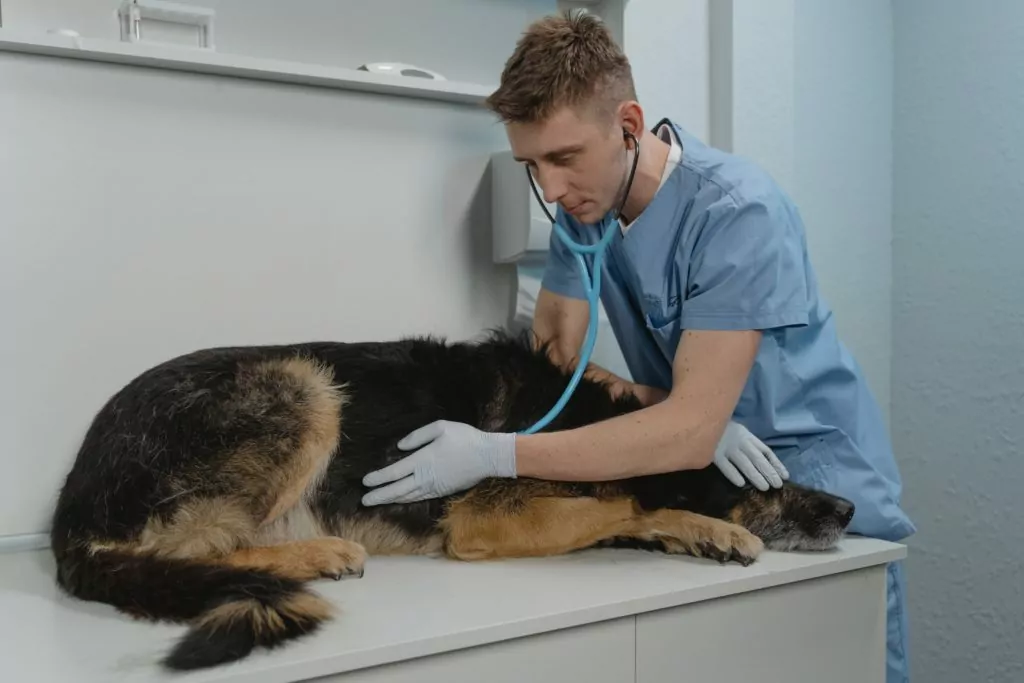
Veterinarians as professionals have the unique role of protecting the health and well-being of both animals and people. Currently, Veterinary Medicine in Europe sees around 200 000 employed veterinarians. In this article, we will unpack veterinary medicine in Europe.
It’s quite interesting that more than 70 percent of new veterinary post-graduates in Europe are women. 20 years ago the veterinary profession was dominantly male-occupied, and as time passes the percentage of female doctors annually increases.

Degrees in the Field of Veterinary Medicine in Europe
Practicing veterinary medicine and being a doctor requires the exclusive DVM (Doctor of Veterinary Medicine) degree. Many doctors continue their education and specialize in different fields, thus increasing their chances of bigger salaries and better job opportunities. Alongside veterinarians, the veterinary technicians, or veterinary assistants can work in veterinary clinics and practice veterinary medicine with lesser qualifications and educational degrees.
Technicians have a limited range of activities they can perform. For more info about the differences check our Veterinary Doctor vs. Veterinary Technician article. Employment opportunities for veterinarians in Europe include a vast variety of fields, with the private clinical practice being the most favorite choice for all. Except for clinical practice, the DVM degree is favored in public health departments, teaching and research, military service, regulatory medicine, marine biology, national parks, and zoo management, disease control, exotic species pathology, etc.

Licenses and Legalization
Becoming a Doctor of Veterinary Medicine requires a bachelor’s and a master’s degree in Veterinary Medicine acquired at an accredited schooling institution. In order to get licensed to practice veterinary medicine, post-graduates need to pass certifying exams regulated by country. Similarly, this goes for veterinary technicians who also need adequate schooling degrees (Vet Techs, Vet Assistants) and certifying exams.
Accredited Veterinary Schools in Europe
The veterinary education institutions in Europe are accredited by the only official authority – The European Association of Establishments for Veterinary Education (EAEVE). There are a total of 94 members, or institutions in Europe accredited by the EAEVE. Some of the institutions are also accredited by the American Veterinary Medical Association (AVMA). This accreditation makes it possible for graduates and post-graduates to work in the USA, after passing the state exams, or continue their education in-state. See the list of Top 5 Vet Med Schools in Europe, the US, or Australia!
Job Opportunities in Veterinary Medicine in Europe
The employment opportunities in the field of veterinary medicine are constantly increasing in Europe. The rate of employment in Europe for veterinarians has an average of 78 percent. The best employment statuses of over 90 percent are reported in Belgium, Serbia, Portugal, Poland, and Bulgaria. Only 3 percent of veterinarians in Europe are unemployed, and 2 more percent aren’t working in the field because of other reasons. The highest unemployment rates for vet professionals are noted in Macedonia, Italy, and Spain.
Employment Sectors
The most popular employment sector for vets in Europe is the private practice with an overall of 60 percents of professionals working. Most of them are focused on companion animals, rather than farm animals. The bigger focus on companion animals is registered in the western part of Europe. 19 percents of veterinarians work in the field of public health as the second most popular field of work. 6 percent contribute in education and research, 4 percent in various industries.

Revenue Streams for Veterinary Medicine in Europe
The owners of veterinary practices in Europe earn an average of 44.000 Euros per year. Veterinarians that work in private practice, but do not on one earn an average of 25.000 Euros annually. Biggest salaries have the veterinarians in Netherlands, Switzerland, France, and Denmark with over 70.000 Euros per year. Professionals in the industry and public health earn approximately as much, while the ones in education have the lowest income.
Summary
For sure the DVM degree can open new horizons and a lot of areas where a person can work. The market trend in Europe correlates with the increased need for certified veterinarians. While the most of them will work in private practices and will treat companion animals, every now and then it’s not a bad idea to look for other opportunities, as the profession makes it possible to show your knowledge in other necessary and well-paid fields of work.
